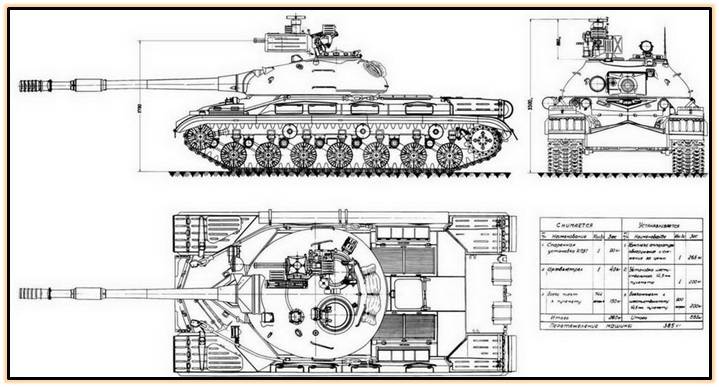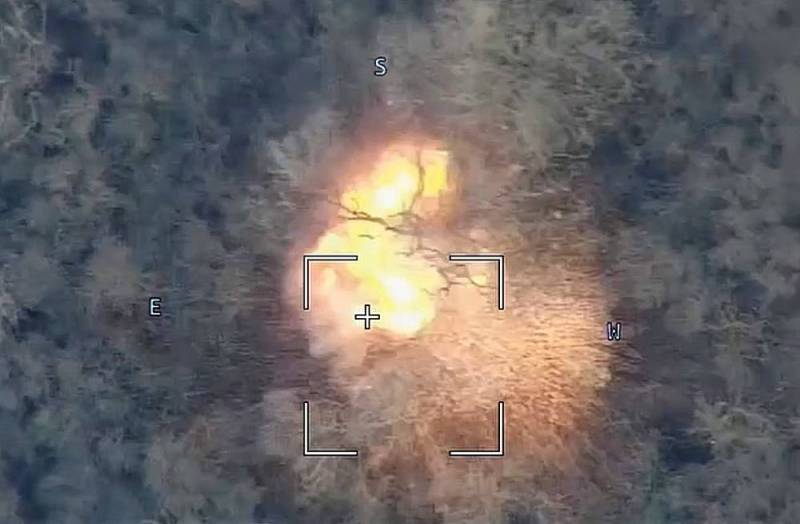"Oplot-MO": the forgotten Soviet KAZ project can get a second life?
We continue the previously started topic about possible ways to improve Russian armored vehicles in general, and tanks in particular, taking into account the experience gained from the Northern Military District. In this publication, I would like to discuss in more detail ways to protect against new threats in the form of attack drones of various types.
Along the tower
As noted in previous publications, to RPGs and ATGMs a new problem has now been added in the form of drones attacking the poorly protected upper hemisphere of tanks and other armored vehicles.
Unfortunately, ordinary Chinese-made civilian quadcopters turned out to be unexpectedly effective, under which the Ukrainian Armed Forces learned to hang mines and grenades, dropping them on towers, or even directly into open hatches. On our side, “kamikaze” drones of the “Lancet” type, which have the ability to quickly dive onto enemy armored vehicles and artillery systems, have gained well-deserved fame.
Since no one was actually prepared for such a new threat, it was necessary to make the now famous “barbecues” that cover the upper hemisphere from attacks by attack drones. And this is working so far, but we must understand that the anti-tank weapons race between the “shield” and the “sword” has already begun, which will lead to the emergence of new, more advanced drones capable of overcoming mounted “canopies.”
Better air defense for armored vehicles is needed, and this could give new life to long-forgotten technical solutions.
"Oplot-MO"
Oddly enough, everything has long been invented before us. The first anti-tank missiles that appeared in the middle of the last century forced Soviet engineers to begin developing active protection systems (APS) for tanks, among which there was one direction that turned out to be a dead end at that time.
To protect tanks from enemy ATGMs, specialists from NII-61 (now the Central Research Institute of Precision Engineering, Klimovsk) proposed using anti-aircraft artillery methods. In particular, to shoot down four French-made SS-10 missiles fired at once, it was planned to use a 12,7 mm machine gun with a rate of fire of 10 thousand rounds per minute. True, a lot of obvious technical problems immediately arose, but in the 60s work in this direction really began, and the research work was called “Oplot-MO”.
As a result, the appearance of the promising anti-missile system looked like this. An automated machine gun turret was located on the commander's hatch of the tank. Also outside the armored space remained a small-sized radar station, which was supposed to monitor the environment and detect objects moving towards the tank at a speed of about 600-800 m/s. When the ATGM approached the tank at a distance of up to 200 meters, the radar aimed the machine gun at the target.

Calculations showed that to effectively destroy anti-tank missiles of that time, a rate of fire of 9000 rounds per minute was required. The decision to fire the ATGM was made by the KAZ automatics independently, in automatic mode. “Oplot-MO” consisted of several blocks installed inside and outside the tank, which made it possible to equip it with other types of armored vehicles. Why has no one, except specialists and some enthusiasts, even heard of this KAZ?
At the time of creation, there was no multi-barreled heavy machine gun with the required rate of fire characteristics. Nowadays, on specialized forums they argue about which caliber would be better suited for the task at hand - 12,7 mm or 7,62. In addition, the disadvantage of this KAZ was the overall bulkiness of the design, built on a component base from the middle of the last century. As a result, in 1965, work on the machine-gun anti-tank system in the USSR was stopped.
TAMS (tank anti-missile system)
However, in distant Great Britain this direction was considered quite promising. In the 80s of the last century, the GEC-Marconi Dynamics System company built its version of the KAZ machine gun.
The British tank was equipped with two radars (one all-round for detecting targets, the second for tracking and aiming), which, using a microprocessor, made it possible to detect attacking anti-tank missiles at a distance of one and a half to two kilometers and destroy them with fire from two 7,62-caliber machine guns. mm at a distance of 400-900 meters. The KAZ's ammunition capacity was 400 rounds, which would theoretically allow it to shoot down up to 20 ATGMs. True, full-scale tests have demonstrated that machine guns are no match for continuously improving anti-tank missiles.
Does this mean that a KAZ of this type deservedly died without being born?
This statement is partly true. Against ATGM and RPG attacks, other means of active defense are needed, but against attack drones, an automatic anti-aircraft machine gun is what you need! If you integrate an anti-aircraft turret with a four-barreled GShG-7,62 machine gun into a KAZ, built on a modern component base, it will be able to effectively shoot down attack drones attacking the tank.

Information